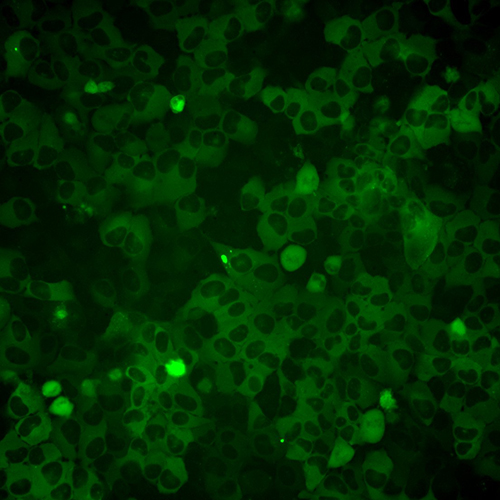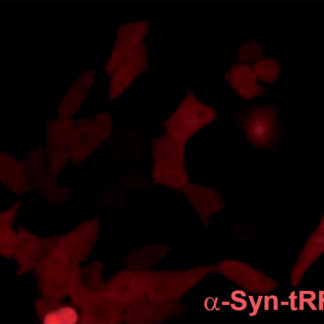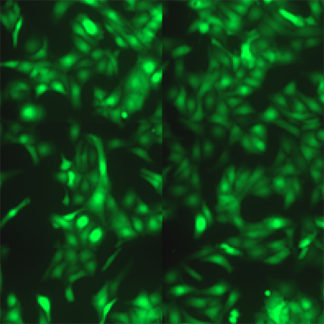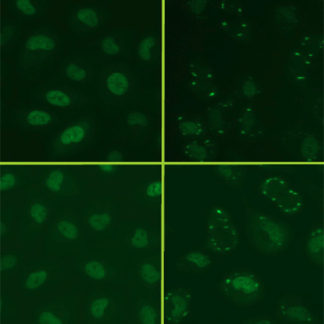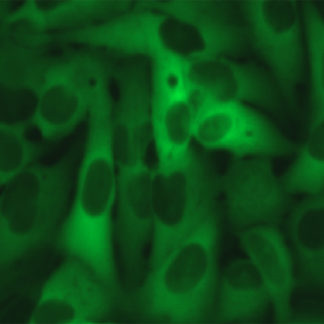Description
We developed a novel green fluorescent U2OS cell line through stable transfection with human mHTT-92Q (exon 1) under an inducible promoter. This Green Fluorescent mHTT-92Q (exon 1) inducible cell line is ready for cell-based assay applications. The stable cell line provides consistent levels of expression by adding IPTG 1mM and helps to simplify the interpretation of the results.
- This cell line is an “in vitro” model for research studies.
- Each vial of Green Fluorescent mHTT-92Q (exon 1) inducible cell line contains 3 million cells.
- These cells will expand in more than 30 passages following our cell culture manual.
Huntington’s disease (HD) is a hereditary progressive autosomal dominant neurodegenerative disease. It is also neuropsychiatric disorders leading to cognitive decline. HD is caused as a result of a mutation that multiplies the CAG codons encoding the amino acid glutamine in the exon 1 on the short arm of chromosome 4p16.3 in the Huntingtin (HTT) gene.
The number of CAG triplets can vary over a wide range. The disease develops when the number of repetitions exceeds 35. The longer the CAG repeats, the earlier the onset of disease. In cases of juvenile onset Huntington’s disease (JHD) the CAG triplets often exceeds 55.
Mutant HTT (mHTT) fragments underlie the molecular pathogenesis of Huntington’s disease. Studies for the toxicity of N-terminal fragments in human post-mortem tissues and mouse models conclude that the exon 1 of mutant HTT protein is the most pathogenic HTT fragment. Indeed, the aggregates have been only detected by antibodies to the N-terminus of HTT.
This green fluorescent mHTT-92Q (exon 1) inducible U2OS cell line is a useful tool in related cell-based assays.


